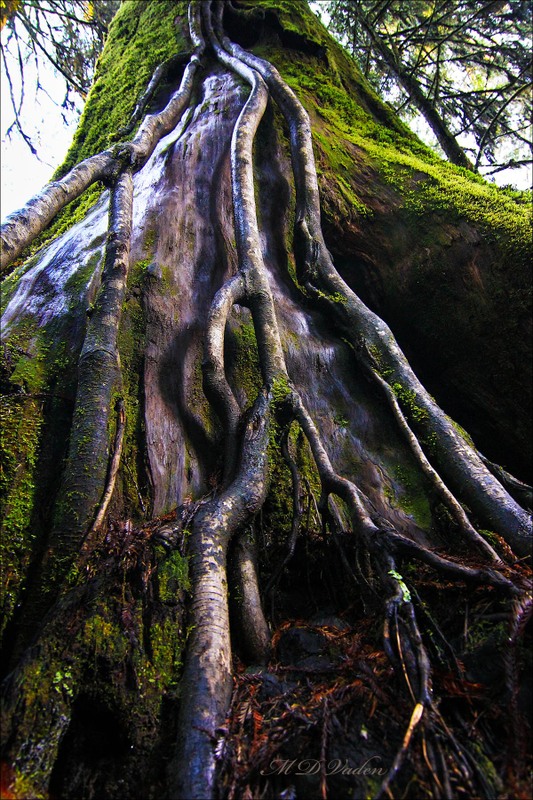Ever seen the Corkscrew Tree coast redwood in Prairie Creek? In 2017, I finally figured out how that redwood probably formed, and shared a short video to explain. In a nutshell, it’s a cathedral redwood that used to have a middle trunk that rotted or burned. The missing trunk’s convex or round surfaces caused the concave inner surfaces seen up on the remaining trunks. Another tall trunk probably broke and fell into Corkscrew tree’s crown and rested up there in a horizontal position. In the course of time, another tree fell and impacted that horizontal one, spinning it with momentum that spun and twisted the Corkscrew Tree. Because the living stems were concave and flattened, that made those structurally weaker than round trunks. This is the only series of things I see happen in the forest that account for every shape and trait of the Corkscrew Tree.
Several people watched and found it interesting, but one man posted his doubts at RNP Facebook. He tried to dismiss it altogether, saying there was “no evidence”. His reply seemed to lack humility. I replied about the fire-blackened trunks all over Redwood National and State Parks. Those charred trunks are the forest’s way of telling us there was a forest fire. If we don’t see 50 foot flames, should we dismiss any historic forest fires, saying “there is no evidence”?
The blackened trunks and forest fire is one of the easier examples to help explain this. It’s like Redwood Forest Language 101. But there is much more to the language of the forest that takes much more experience to learn or recognize. For example, when I walk down Prairie Creek trail, there is a root extending through the air from a redwood. There is a reason that root is not down in the soil, That root is the evidence another trunk used to be there.
Near Hatton trail, almost a half dozen large redwood trunks are in a near-perfect straight line. It’s not coincidence. Those redwoods are their own testimonial. When I drive down Howland Hill Road and see roots on the outside of a dead trunk, those roots are evidence, teaching what used to be there.
Some of this is easier to show people while exploring together. And I share some examples exploring with people from other countries and states. I’ve worked with trees as an arborist since 1980, and grew up in a woodland from 1964 until college years in the early 1980s. Most of my life has been around trees. I study their changes, shapes and forms. No shape is without a reason. Every curve or indentation is due to growth, reaction or restriction; sometimes self-inflicted like a girdling root.
All those years taught the language of trees. And that opened the door to the language of the redwood forest.
Some things may never be fully understood or revealed. But the forest can reveal quite few things about it’s past.


Recent Comments